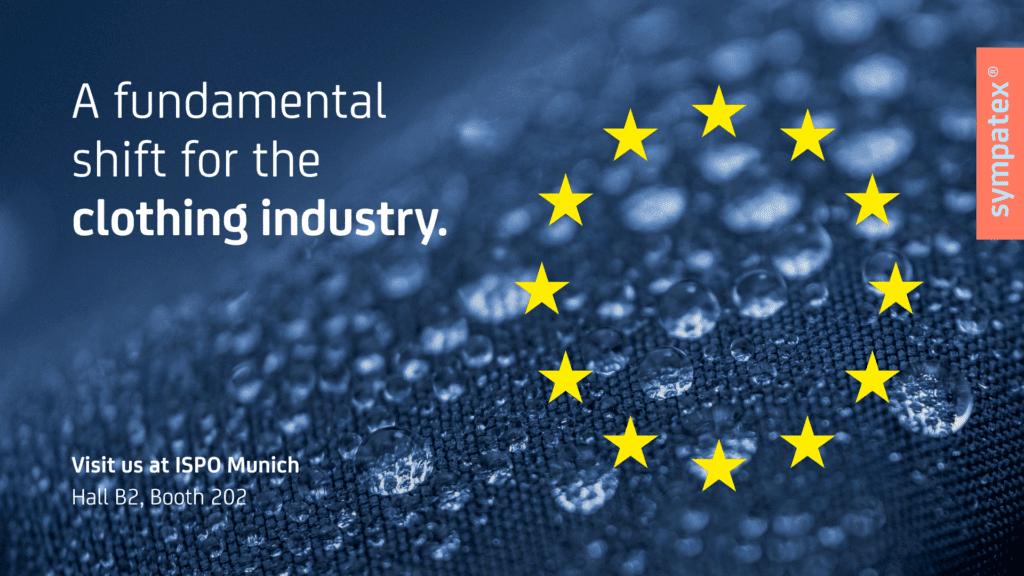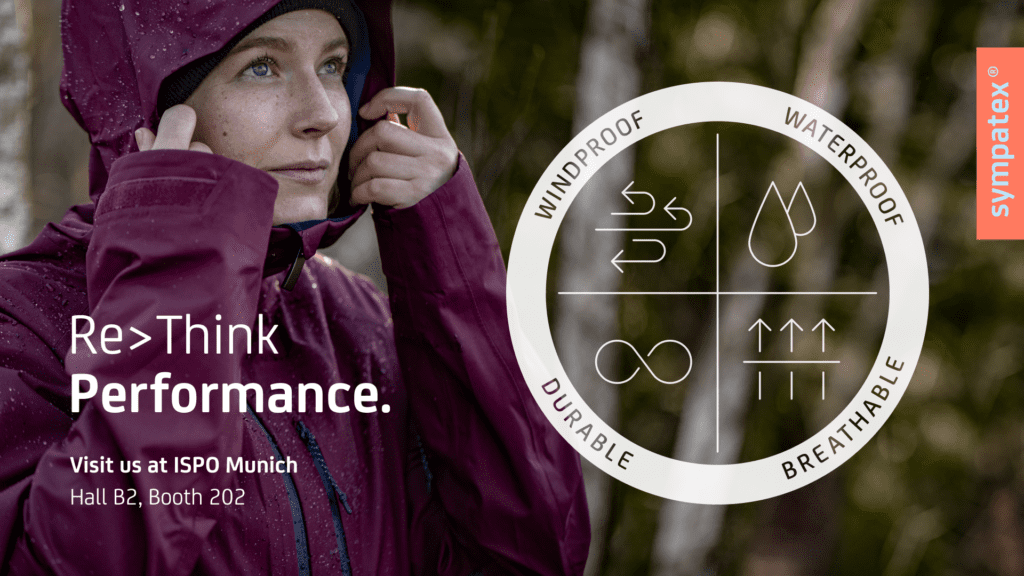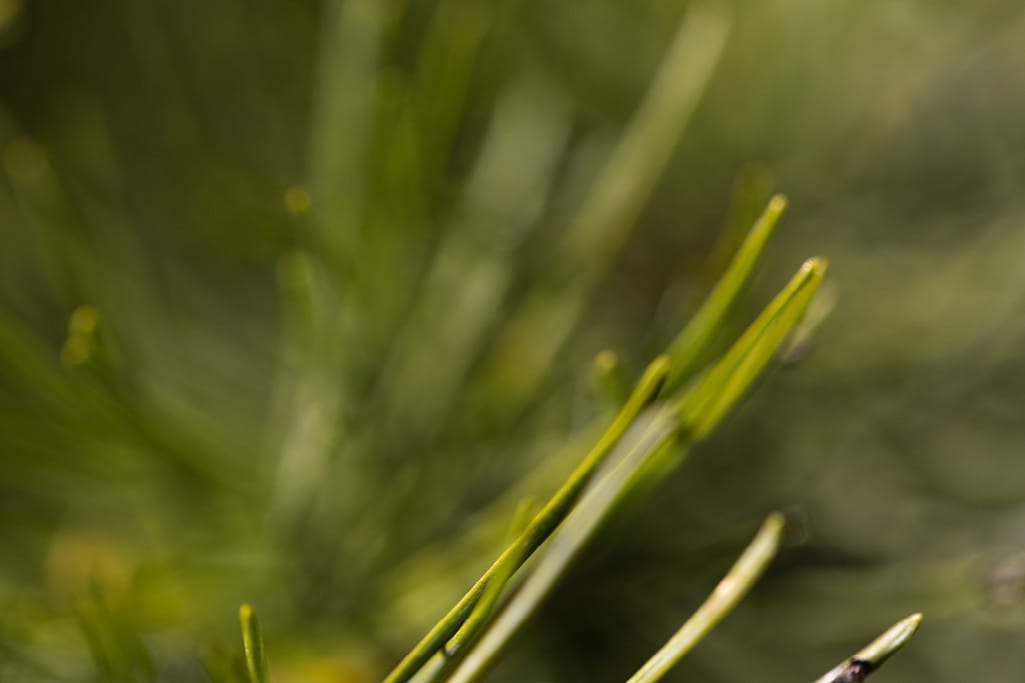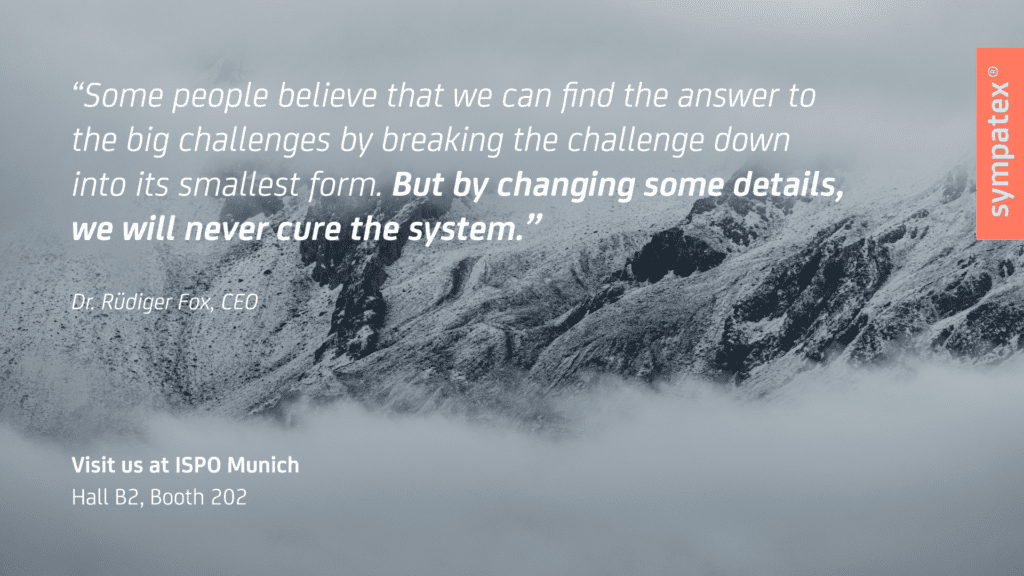Design for recycleability will be the Game Changer!
- minutes reading time
Discover 7 Golden Eco-Design Rules to prepare a circular future.

Are you ready to support this fundamental shift for the clothing and outdoor industry?
In the following, we quickly summarize for you what is currently happening in the textile sector – immensily pushed by the EU Textile Strategy, as part of the EU Green Deal.
As the strategy aims to make textiles more durable, repairable, reusable and recyclable we invite you to discover the 7 Golden Eco-Design Rules to prepare a circular future.

What does Eco-Design mean?
Our brand partners design minimalist products from polyester based mono-material. The timeless design extends the useful life and the mono-material simplifies the recycling of the product, because it can be done without separating the individual components.

The EU „Spring-Package“
The EU has already set a success story in implementing environmental rules for products or sectors. The new initiatives for the textile sector will go even further.
Ecodesign will be translated into consumer savings by making clothing last longer, cheaper to repair as well as being energy and resource-efficient.
Now lets see how this will be done.

Major Initiatives
The EU 2022 „Spring-Package“ contains multiple initiatives. Above all, the EU Textile Strategy announces firm measures against fast fashion and sets the goal for a circular textile industry by 2030.
- Textile Strategy
- Ecodesign for Sustainable Products – ESPR
- Empowering Consumers for the Green Transition

Most important: it is about product requirements that focus not only on energy efficiency, but also on recyclability and other circular economy aspects.
Also the EU wants consumers to know more about the impacts of the products in store. This will enable more sustainable choices.
Therefore, digital Product Passports will become the norm and the possibility to introduce labelling for products, for instance on their reparability score, will also exist.
Durability will become our license to operate, while Design4recycleability will be the Game Changer!
The EU Textile Strategy
- EU textile products are long-lived and recyclable, affordable, to a great extent made of recycled fibers, free of hazardous substances and produced in respect of social rights and the environment.
- Fast fashion is „out of fashion“, and economically profitable re-use and repair services are widely available.
- Producers take responsibility for their products along the valuechain, including when they become waste.
- The circular textiles ecosystem is thriving, driven by sufficient capacities for innovative fiber-to-fiber recycling, while the incineration and landfilling of textiles is reduced to the minimum.
Did you know, that the European Commission will tackle this issue in two ways:
First, by obliging companies to publish information about what they discard and why.
Secondly, by opening the way to an outright ban of the practice of destruction, for particular products or product groups.

7 Golden Eco-Design Rule
There is both eagerness and the need to get fast fashion out of fashion.
In practice, that means there will be product specific performance requirements to increase the use of fiber-to-fiber approaches and recyclability as well as increasing producer responsibility.
These changes ideally lead to supporting the collection of textile waste, preparing even more for reuse, a boost in recycling, and necessarily to a different approach to design, with circularity built in from right from the beginning.
So, follow these 7 rules to prepare a circular future:
1. Use PES-based material
Where recycling dreams come true, PES boasts reuse properties. Remember: 80% of synthetic textiles are polyester based.
2. Use PES-based mono material
Make separation processes unnecessary and recycling cost-effective.
3. Use mono material for trims too
The two go hand-in-hand. Mono material trims help minimizing the requirements for separation technologies.
4. Avoid harmful chemicals
Keep your textiles and clothing contaminant-free! Only non-toxic textiles can be recycled ecologically and economically.
5. Use reasonable design
The basis for a sustainable design should be a design that is wellthought in terms of reparability, modularity and recyclability.
6. Sustainability instead of superfluous high-performance
The simpler the design, the more cost-effective it can be recycled.
7. Don‘t worry. Just give it a try!
Be bold and set an example for a circular textile economy.
Please feel free to contact us and let’s Re>Close the loop. Together.